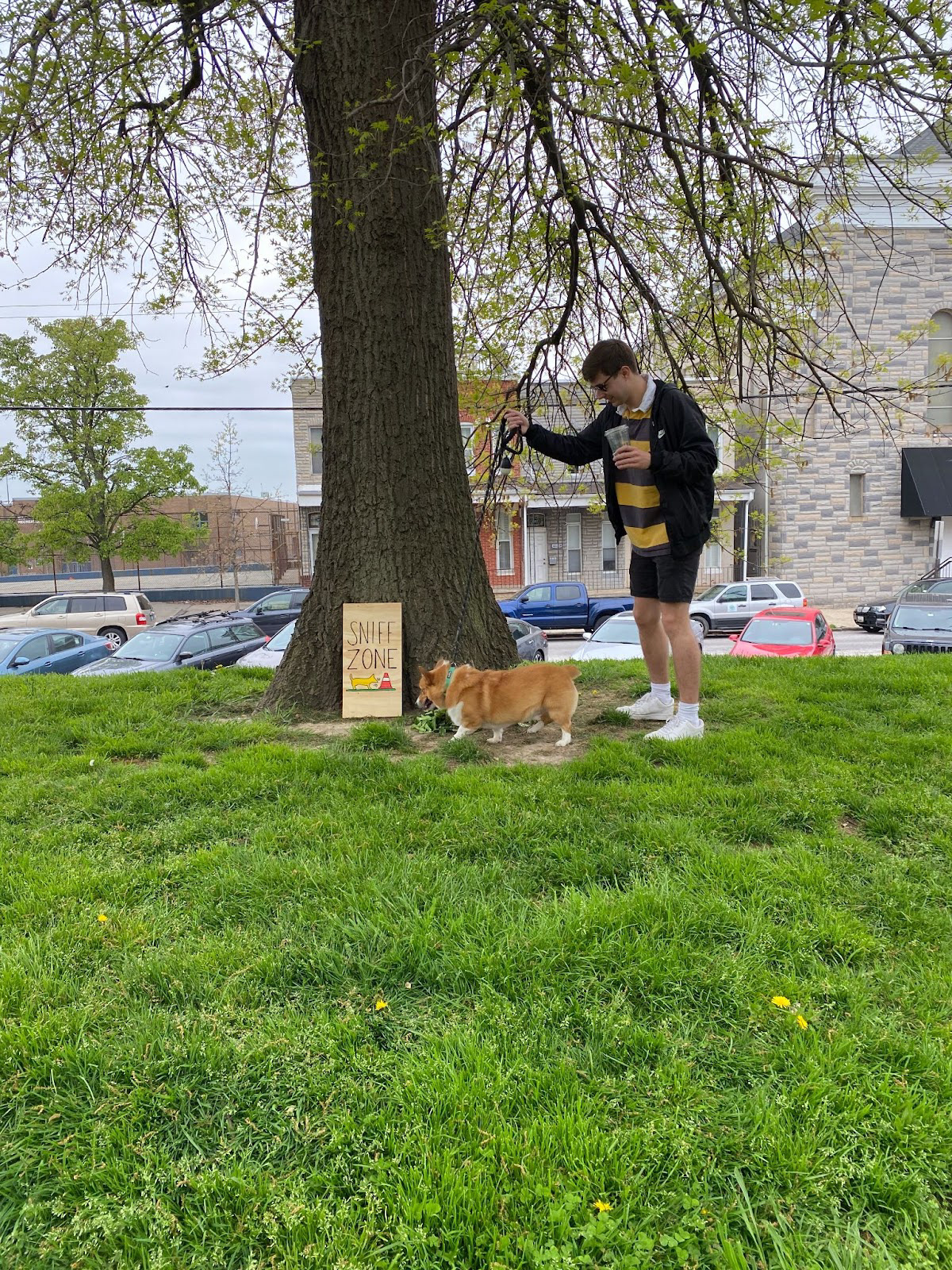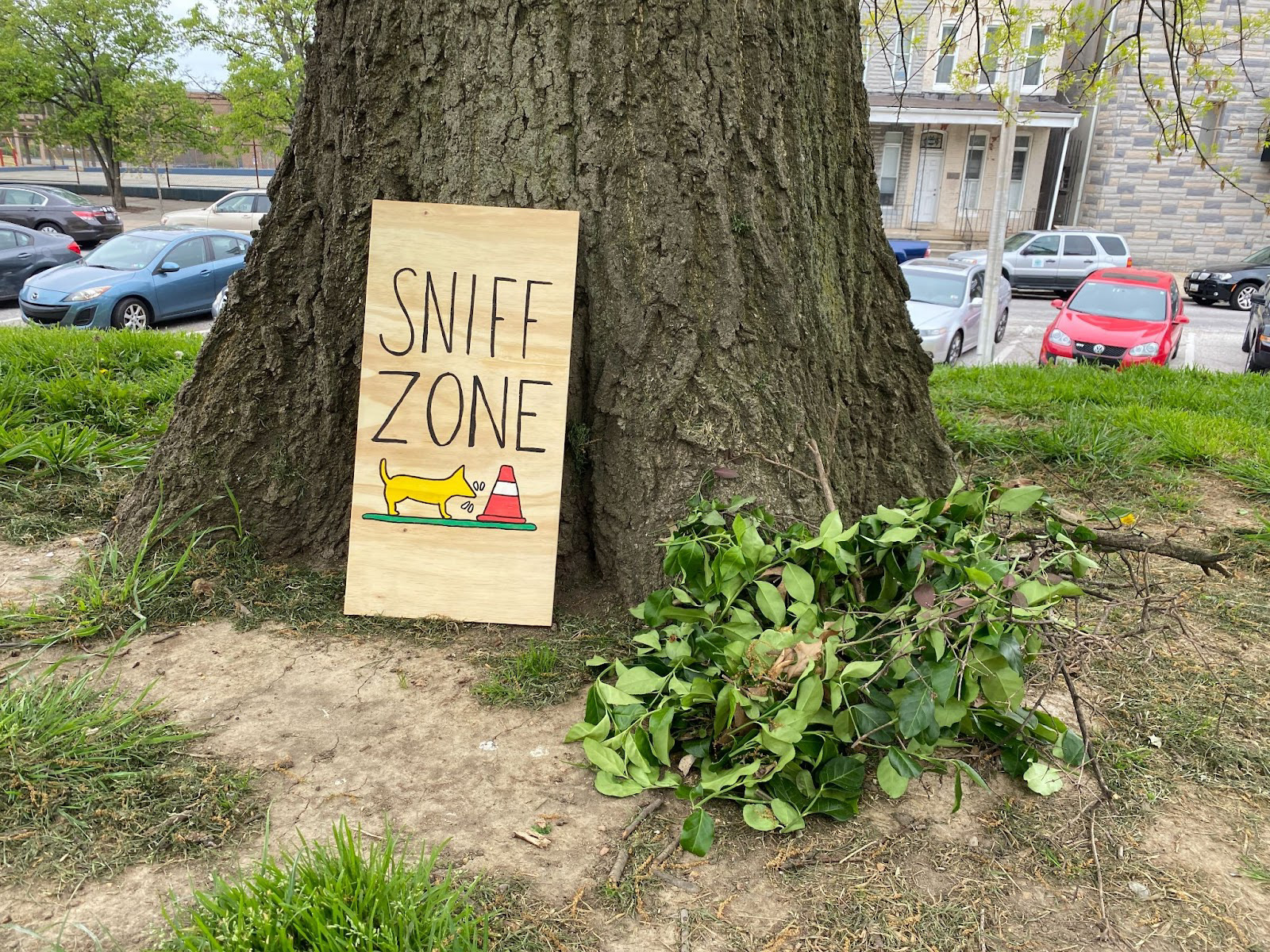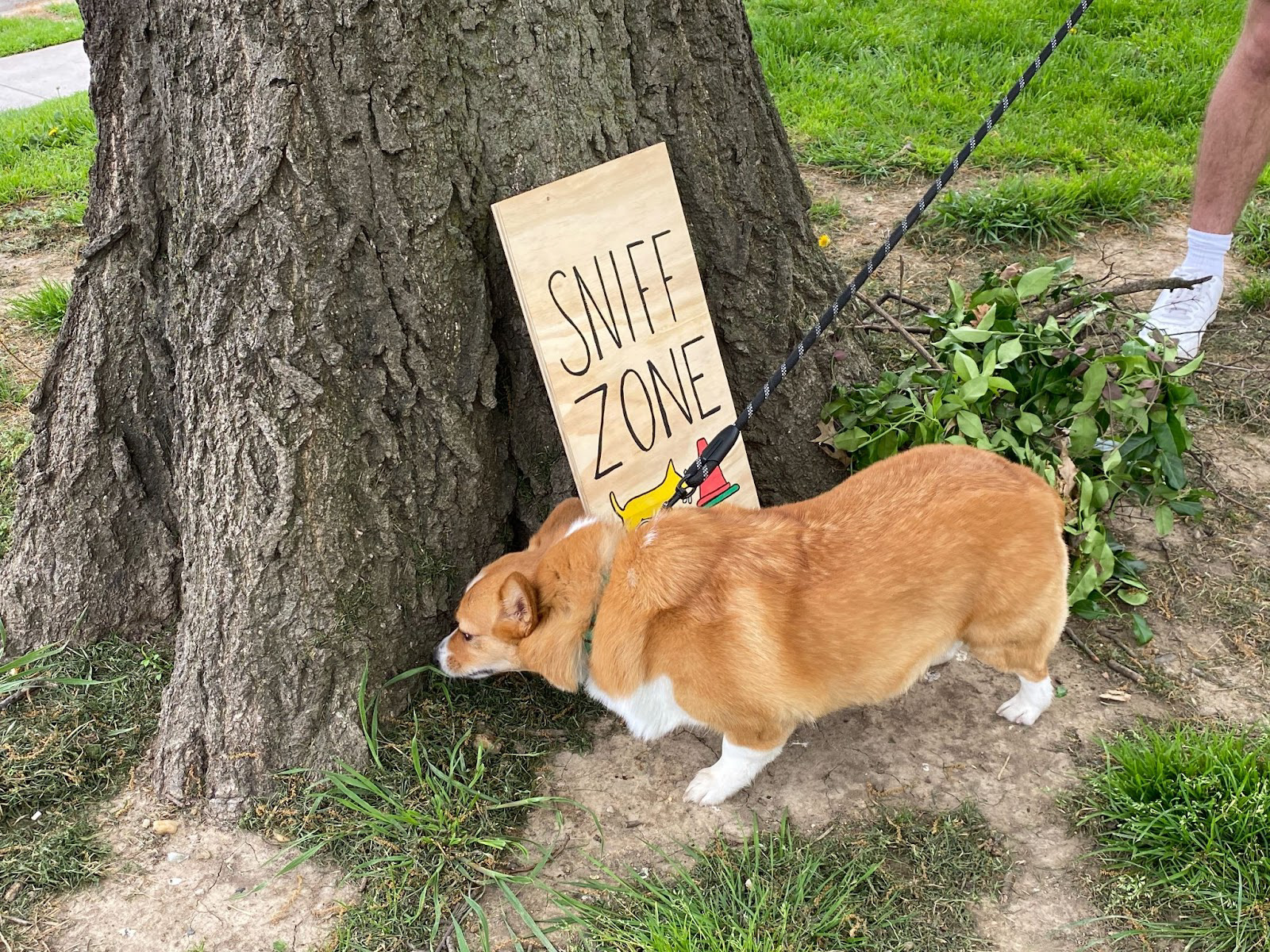
Owner and dog walking around the 'Sniff Zone'

The 'Sniff Zone'

Dog sniffing the 'Sniff Zone' sign
My Design Process:
Process Observation Map of Rash Field Park, Baltimore (2022)
Phase One: Identifying a Problem
I started by defining my study area and choosing boundaries in a familiar place where I could observe common behaviors and interactions. I choose to focus on Federal Hill Park. Next, I mapped out any activity I saw and noted anything significant.
The two major observations I noticed were that...
A. Federal Hill is filled with amenities for humans but lacks significant space dedicated to dogs.
B. Dogs and their owners seem to frequent this area at high rates.
My observations quickly led me to focus on dog owners and the lack of amenities provided for their dogs located in the park.
Phase Two: Interview Stakeholders
After discovering the initial problem surrounding dog owners, I began conducting interviews to get a better perspective on whether other people have made similar observations to my own. I asked questions like if they had a special routine with their dog or if they knew their favorite part of the park.
I received some very interesting responses to my final question, "In an imaginary realm If your dog were to write a complaint about something the park could improve, what would they say?" One dog owner stated, "There isn't a place to engage your dog here, especially since there's no off-leash (allowed in the park). So I end up circling a few times (around the park) to give him (their dog) enough exercise."
I found that most dog owners had very solid routines and that the park was where they frequented with their pets, but something was missing...
'360 Empathy' graphic organizer with documentation.
Phase Three: Insights & Ideation
Using data from various interviews, I started to create insights into my audience using the 360 empathy map. These insights led to various “How might we…” statements where I focused on improving the quality of time spent at the park/ways to provide more opportunities for dog owners in a public setting. The goal during this phase was to understand what people really needed within this space.
After some research, I found an article posted by PURINA titled, 'Understanding your dog, All About Your Dog’s Sense of Smell' that outlines the importance of being 'nose aware.'
The act of sniffing fulfills a major part of a dog’s sensory needs - as much as a physical and mental exercise. Sniffing makes them happy and gives them an outlet for their hard-wired natural behaviors. 5 minutes of “sniffing” can be more stimulating and engaging for a dog than their entire walk alone.
This led to a lot of potential solutions to my problem. The main idea I came up with for this intervention was a 'Dog Walk.' Essentially, it would be a section of sidewalk in Fed Hill Park where dog owners can walk their dogs past a series of “sniff zones” to help stimulate their dog's nose and improve overall health. Along the dog walk, there would be statistics written in chalk with information about the importance of sniffing and the purpose behind the intervention.
Sketchbook documentation capturing ideas, thoughts, and questions.
Phase Four: The Prototype
After redefining my problem, I was able to diverge my thinking once again and start considering low-fidelity prototypes to test out the specific mechanics of my potential solution. I created a Sniff Zone; a designated area for dogs to exercise their nasal receptors in a social setting. An area in Fed Hill Park was labeled with a sign reading “Sniff Zone” and a symbol of a dog sniffing a traffic cone. The area was embellished with various branches, twigs, and leaves to provide sniffing material. After further observation of the prototype in action, it failed to maintain any interaction with my target audience and was unsuccessful at attracting any dogs.
'Dog Walk' Visual Concept Sketch
Summary:
Each phase of this project brought valuable insights and challenges to my overall public design intervention. At the end of each phase, I bounced back and forth between all the data I was collecting and the assumptions I made. I think I chose a problem that isn’t a real problem for most people, so coming up with a solution seemed arbitrary.
I think my prototype could be adjusted and reimplemented in a new location to see if it could produce different results. Overall, the idea of a Dog Walk still seems feasible, and I will consider revisiting and potentially assembling it sometime in the future.